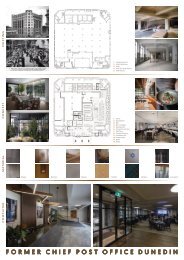You also want an ePaper? Increase the reach of your titles
YUMPU automatically turns print PDFs into web optimized ePapers that Google loves.
Knee
7
("
With extended knee, place the lower edge of the probe on the peroneal head and then
rotate its upper edge anteriorly until the lateral collateral ligament appears as more
elongated as possible in the US image. Just deep to the proximal part of the lateral
collateral ligament, the popliteal tendon can be imaged in its bony groove. Transverse US
planes may help to assess the relationship of the lateral collateral ligament with the more
posterior biceps femoris tendon.
"
*
Legend: arrow, popliteal tendon;
arrowheads, lateral collateral
ligament; asterisk, lateral
meniscus; F, fibular head
8
Check the superior tibiofibular joint for joint effusion and paraarticular ganglia by means of
axial and coronal US images obtained over the anterior aspect of the fibular head.
# "
For examination of the posterior knee,
the patient is asked to lie prone with
the knee extended. Scanning the posteromedial
knee on transverse planes
demonstrates, from medial to lateral,
the sartorius – made, at this level,
of muscle fibers - the gracilis tendon
and the semitendinosus tendon that is
located behind the semimembranosus
tendon.
%$)
*
*
"!
#
Legend: asterisks, articular
cartilage of the medial femoral
condyle; black arrowhead,
semitendinosus tendon;
curved arrow, saphenous
nerve; mfc, medial femoral
condyle; MHG, medial head
of gastrocnemius; Sa, sartorius
muscle; void arrowhead,
gracilis tendon; void arrow,
tendon of the medial head of
gastrocnemius;
5
















